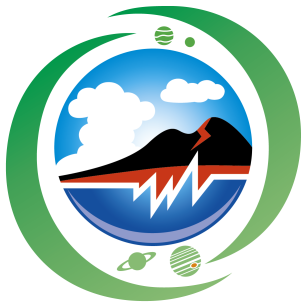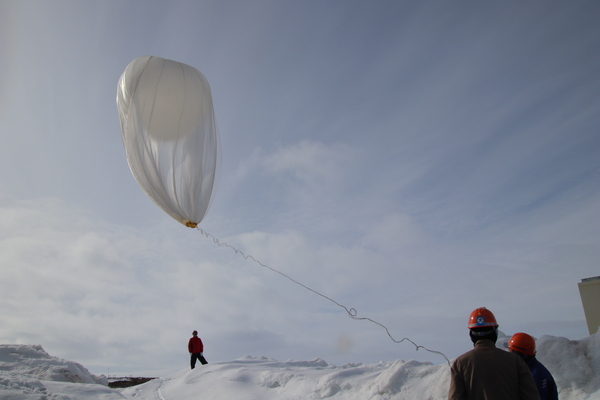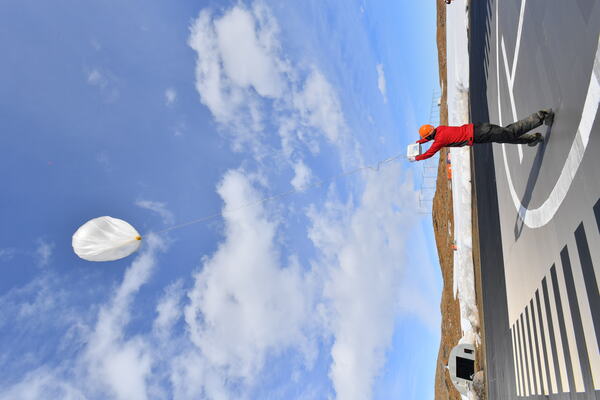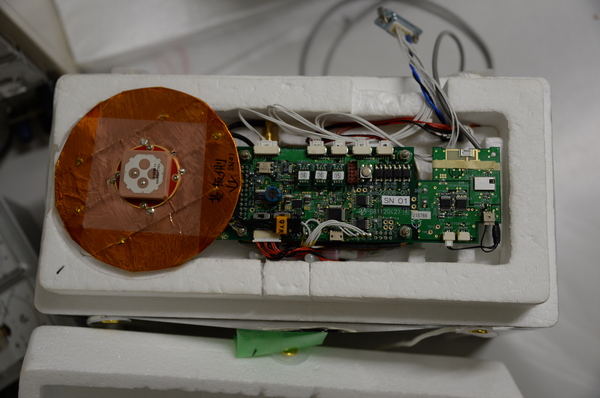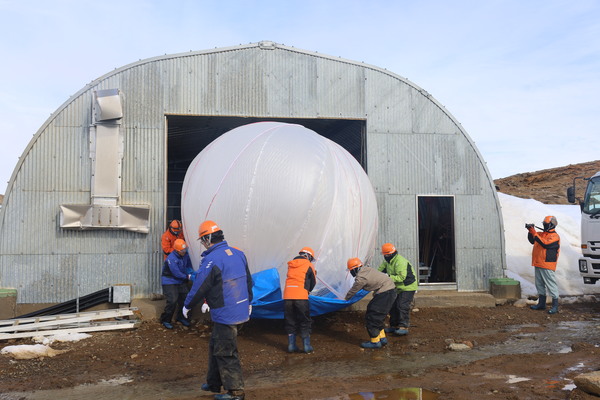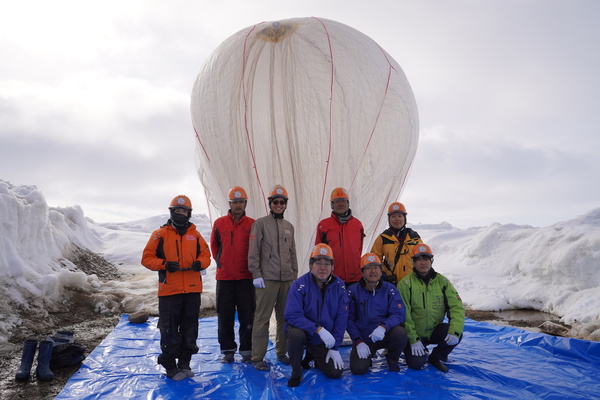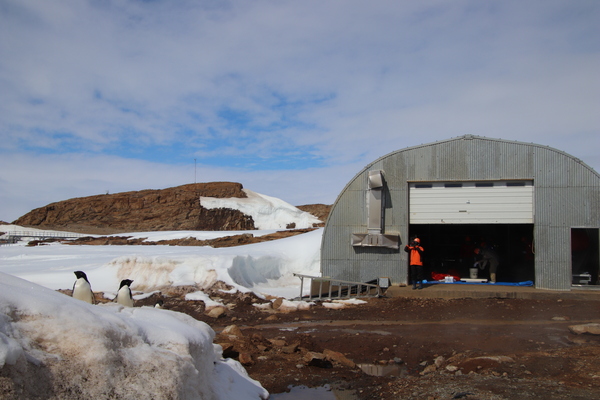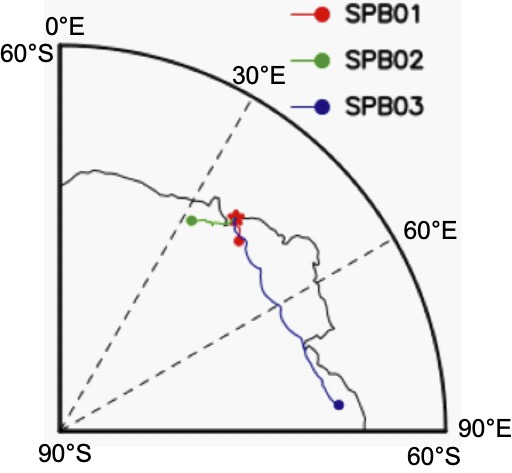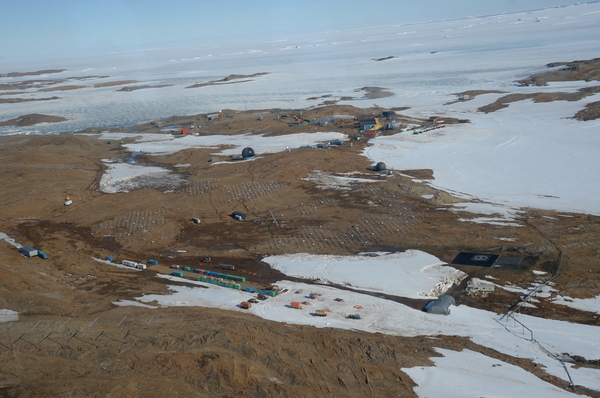Topics 2022.10.26
Super pressure balloon observation of atmospheric gravity waves at Syowa Station, Antarctica
Atmospheric gravity waves are wave phenomena that travel through the atmosphere and are mainly generated near the Earth's surface due to the influence of topography and meteorological phenomena such as high and low pressure systems. You may have seen striped clouds in a line, which are also caused by atmospheric gravity waves. As these atmospheric gravity waves propagate upward, they carry energy to the stratosphere and mesosphere at altitudes of more than 10 km and have an important effect on upper atmospheric temperatures and dynamics. Although many observations of atmospheric gravity waves have been made, there are still few observations in the Antarctic, and the information regarding the activity and characteristics of atmospheric gravity waves in this region is insufficient.
One way to observe atmospheric gravity waves is to use super pressure balloons. Super pressure balloons maintain a constant buoyancy by keeping the volume of gas in the balloon constant, and float at a constant altitude (more precisely, constant density surface) for a long time. By accurately observing wind speed, air temperature, and air pressure with this balloon, momentum transport due to gravity waves can be estimated, and their horizontal distribution can also be captured. Although there were some observations using super pressure balloon in foreign countries, this was the first time for Japan to conduct such an observation.
There is also a large atmospheric radar called the PANSY radar at Syowa Station, Antarctica. This radar can obtain information of atmospheric gravity waves in the altitude direction. The purpose of this project is to obtain a three-dimensional picture of momentum transport due to atmospheric gravity waves by launching a super pressure balloon from Syowa Station and combining it with the PANSY radar observations and the latest meteorological reanalysis data.
This project is performed in cooperation with National Institute of Polar Research, Institute of Space and Astronautical Science / Japan Aerospace Exploration Agency, University of Tokyo, etc. and we are planning year-round observations three years later. As the first step of the project, we conducted observations during the summer observation period at Syowa Station to confirm the performance of the balloon and instrument, and to establish the balloon launch and observation methods. Associate Professor Murata of the Department of Geophysics in Tohoku University and Associate Professor Tomikawa of the National Institute of Polar Research participated in the 63rd Japanese Antarctic Research Expedition (JARE63) as summer members, and launched three balloons at Syowa Station from early January to early February 2022.
Data such as wind speed, temperature, and pressure observed by balloon-borne instruments are transmitted using radio waves. However, in case of long duration flight, the balloons fly too far for radio waves to reach Syowa Station. Therefore, this instrument uses satellite communications to transmit observation data.
The balloon used in this project has a diameter of about 8 m when fully inflated in the sky, but the diameter is about 4 m when filled with helium gas on the ground. Wind is the balloon's greatest enemy when launched, and the balloon will be knocked to the ground at wind speeds of around 5 m/s. However, it takes more than two hours for the launch operation, so it is safer to work inside a building without the wind until just before launch. In addition, although it is not so cold around 0 degree at Syowa Station during the summer, it is dangerous to work outside for long time in the winter. Therefore, we need a building to work inside for the launching operation of a 4-m balloon. Fortunately, Syowa Station has garages for large vehicles and a warehouse for unused observation equipment, so we were able to use one of them. Since at least five persions were necessary for the launching operation, we asked other members of JARE63 to help us on the day of the launch, and all three balloons were successfully launched, followed by a level flight at an altitude of 18 km.
The data obtained is being analyzed. Figure 7 shows the trajectories of the three balloons. The balloon trajectories are determined by the ambient wind. SPB03, the balloon with the longest observation period, made a 1/8 orbit around the Antarctic Continent from Syowa Station (red star in Figure 7) in an eastward direction.
We are preparing for year-round observations at Syowa Station. We will continue to improve balloons and instruments to ensure longer level flights.
Isao Murata, Associate Professor, Planetary Atmospheric Physics Laboratory (concurrent: Graduate School of Environmental Studies)
Web link:
Official blog for JARE: Super pressure balloon launched from Syowa Station
https://nipr-blog.nipr.ac.jp/jare/20220113post-201.html
Official blog for JARE: Atmospheric gravity wave observation by super pressure balloon
https://nipr-blog.nipr.ac.jp/jare/20220207post-216.html
Teachers' Antarctic Program BLOG: Super Pressure Balloon Launched
https://nipr-blog.nipr.ac.jp/antarctic-teacher/2022/01/post-14.html
The variation of atmospheric general circulation observed using large-scale atmospheric radar as the main tool
https://www.nipr.ac.jp/antarctic/science-plan10/juuten06.html
JAXA Research and Development Report: LODEWAVE
(LOng-Duration balloon Experiment of gravity WAVE over Antarctica)
https://jaxa.repo.nii.ac.jp/?action=repository_uri&item_id=47396&file_id=31&file_no=1
Figure 1: The first launch on January 6 (Photo by Noriyuki Takeyoshi, JARE63)
Figure 2. The second launch on February 4 (Photo by Kensei Kikuchi, JARE63)
Figure 3: Opening the top cover of the instrument. The satellite communication antenna is in the center of the disk on the left. (Photo by Isao Murata, JARE63)
Figure 4: The balloon is carried out from the warehouse at the work site to the balloon launch site. (Photo by Kentaro Baba, JARE63)
Figure 5. Group photo of the launch members. (Photo by Kentaro Baba, JARE63)
Figure 6: Penguins are also curious? Adelie penguins came to the front of the warehouse while preparing to launch. (Photo by Noriyuki Takeyoshi, JARE63)
Figure 7: Trajectories of the three balloons launched this time
Figure 8: Panoramic view of Syowa Station. The fishcake-shaped building in the foreground on the right is a warehouse used for preparing for the launch. The black helipad with the "H" mark is the launch space. The PANSY radar antennas can be seen in the center, and the main part of Syowa Station can be seen in the back. (Photo by Isao Murata, JARE63)
